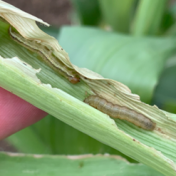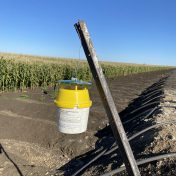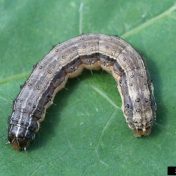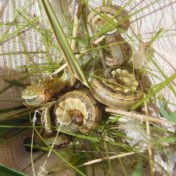Native armyworm species are currently present in many young maize and sorghum crops across southern and central Queensland. Sometimes it is just the occasional larva, but in other situations native armyworms are at higher densities than fall armyworm (FAW). As far as we know, native armyworm are far less damaging to establishing crops than FAW and are unlikely to cause… Read more »
Fall armyworm (FAW, Spodoptera frugiperda) is an exotic pest that was first detected on the Australian mainland in February 2020. State and federal biosecurity organisations have determined it to be unfeasible to eradicate this pest and it is now classified as endemic. In response to this incursion, the Queensland Government has funded a network of traps to better understand the… Read more »
Fall armyworm (FAW, Spodoptera frugiperda) is an exotic pest that was detected in northern Queensland in a maize crop in February 2020. State and federal biosecurity organisations have determined it to be unfeasible to eradicate this pest and it is now classified as an endemic pest. Originating from tropical and sub-tropical areas of the Americas, FAW was reported in Africa… Read more »
Armyworm infestations of barley crops, in particular, are being reported from southern NSW to the Darling Downs. Large numbers of moths are also being seen around lights at night. It is not unexpected that armyworm would be abundant this spring as some of their source areas (Channel Country, North Western Queensland) would have received significant rainfall or flows earlier in… Read more »
As temperatures start to warm up there are a number of insect pests becoming active and causing crop damage. This post provides an overview of current and potential issues for field crops.
As the warm weather persists, insect activity is remaining high. DAFFQ Entomology has received numerous reports of aphids, and leaf-feeding caterpillars. The aphids have been identified as cowpea aphid and the caterpillars as one of the summer-active armyworm species, Spodoptera exigua (lesser armyworm). The concerns about these are for the potential for crop loss caused by direct feeding damage/defoliation or virus… Read more »
On the Darling Downs there have been a number of reports of common armyworm causing significant defoliation in sorghum, corn and millet. Jimbour grower John Alexander treated a severely defoliated sorghum crop two weeks ago. Millet and corn crops in the same area have also been affected. Although patchy, the outbreaks have the potential to cause significant yield loss if… Read more »
Armyworm in barley and wheat. A number of reports of armyworm in crops have been received over the past couple of weeks. Numbers range from 30 to 50 per square metre (extreme) to a more typical 5 to10 larvae per square metre. Assessing larval density is done using a sweep net, bucket or beating a section of row into a… Read more »
As winter crops finish up and approach harvest, there are a couple of pests that still have the potential to cause some concerns. Armyworm and helicoverpa in barley, wheat and oats. There have been a number of reports of armyworm activity across the northern region in isolated pockets. Armyworm has the capacity to lop heads in barley, wheat and oats… Read more »
High rainfall and active plant growth have created perfect conditions for insects to build up in high numbers. On the Downs there have been reports of castor oil looper and common armyworm in plague numbers as well as other caterpillars including sorghum head caterpillar.




